 The following is part of Now Loading, a series that renders verdicts on whether or not your favorite video games deserve a place in the canon of works that have contributed to video-game storytelling in landmark ways. Read the series’ full mission statement here.
The following is part of Now Loading, a series that renders verdicts on whether or not your favorite video games deserve a place in the canon of works that have contributed to video-game storytelling in landmark ways. Read the series’ full mission statement here.
Hello again and welcome back to another, sparkling, brand-new edition of the Video Game Canon! The only online periodical that regularly dissects, discusses, and decides the fate of celebrated titles from gaming’s history to determine once and for all time whether they deserve entry into the vaunted, sacrosanct, and hallowed halls of the Video Game Canon… as determined by us.
Today’s subject: Donkey Kong 64.
A quick note before we begin: as this series is interested in games as analyzed from a storytelling perspective, I will not be discussing the multiplayer mode of this game. To all those mega-fans of weaponized fruit: my apologies.
DK64, as I’ll be referring to it as from here on out, is a 1999 platformer released by the twin geniuses of developer Rareware and publisher Nintendo. Delivered in the midst of their respective heydays, it arrived as the logical next step in the Donkey Kong franchise: after the massive success of the Donkey Kong Country games on the SNES system, taking DK and Co. to the third dimension was as obvious as it was in the cases of The Legend of Zelda or Mario.

Indeed, DK64’s release was a much-heralded affair: beyond the banana-colored controllers and jungle-green consoles, DK64 had the distinct honor of being the first N64 game to necessitate the use of the Expansion Pak, a hulking attachable one could affix to the console to create a menacing object capable of extensive memory. Such a device, however promotional, cannot help but inspire the anticipation of more — more characters, more enemies, more levels — which, when combined with the promised graphics overhaul, created a substantial air of anticipation regarding DK64.
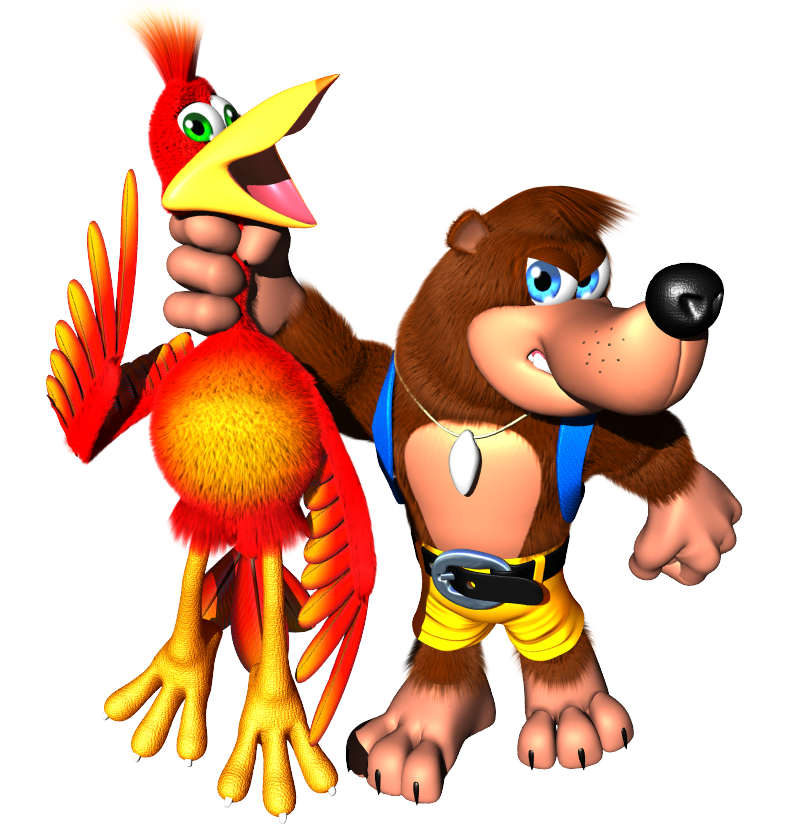
Compounding the issue was the breakout success of Banjo-Kazooie, which (as we’ve already discussed) proved a quality watermark for Rare’s platformer games, acclaimed for its vibrant, idiosyncratic world and its fine-tuned gameplay. Kong Country seemed a logical next destination for the up-and-coming developer, which, by now, had achieved substantial success in the industry.
For Nintendo, DK64 represented a key release in the ongoing process of reestablishing its most popular franchises on its newest console, which to this point had been a nigh-perfect success. Donkey Kong’s appearance in both Mario Golf and Super Smash Bros. foretold exciting new possibilities for the character, and in DK64 Nintendo had an opportunity to establish another top-tier platformer for its catalog.
All of this, along with the game being released so late in the console’s life cycle, consolidated that air of anticipation for DK64 into one great, unyielding mass.
So, did it live up to the hype? Well, in the immortal opening words of the ill-advised “DK Rap”: here, here, here we go…
Story and Characters: When Two Kongs Make a Right (But Three Don’t)
If there’s one component that DK64 has going for it, it’s the characters players already knew and loved.
No matter how you cut it, Donkey Kong is, was, and remains one of the most celebrated Nintendo characters of all time, and for good reason. Seeing him lope about Kong Island in a 3D game of his own is a delight for any fan of the series, and despite the graphics not quite living up to expectations (more on that later), his character model and animations still represented a clear next step for the franchise. Same goes for Diddy Kong, who obtained some of his most defining accessories in this game, including his Rocket Pack and his Peanut Shooters.
All of the classic Kong enemies return with enhanced designs, and King K. Rool, the main antagonist of the series, actually gets his fair share of development. In addition to the updated design of his classic kingly look (and a boxer getup to add to his growing list of disguises), K. Rool is shown to be alternately malicious and feared by his underlings as well as comically unbalanced and pathetic.
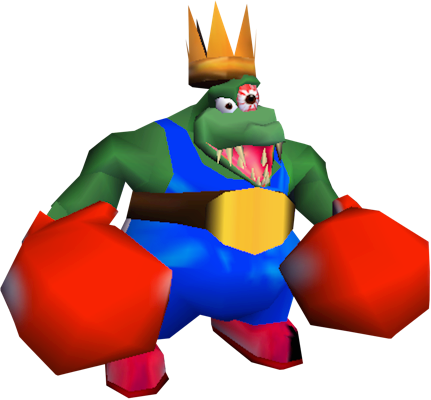
But even here, the first of the game’s flaws begin to show. One of the defining characteristics of DK64 is its emphasis on its new central characters: the clownish, flexible Lanky Kong; the oafish, brawny Chunky Kong; and the nimble, shrinkable Tiny Kong. However, the execution of each was far from perfect.
Even putting aside the ill will engendered by a much-maligned character-switching mechanic (we’ll get into that), none of these characters would go on to achieve much prominence in subsequent titles in the series, instead becoming castoffs in portable titles and Smash. stickers. Lanky Kong is perhaps the most interesting of the three, in that his silly appearance and slapstick irreverence hit a strangely absurdist note otherwise lacking in the Kong universe (which helps explain the Lankyposting phenomenon), but Chunky Kong is a boring spin on the gentle giant trope, and poor Tiny Kong is given little to distinguish herself from her older sister.
In a game that values its new characters enough to devote an entire rap song just to their introduction, the missed opportunities these Kongs represent is especially damning.
The story does manage to change up the usual Donkey Kong narrative, though: rather than just attempting to steal DK’s banana horde, King K. Rool is actively trying to destroy Kong Island here, which is a nice apocalyptic twist that strengthens the aforementioned mania that the main antagonist exhibits. When that plot initially fails in the game’s opening minutes, the mad king reverts to his Kong-napping ways, snatching up the members of the DK crew and stealing some shiny golden bananas while he’s at it.
What follows is to be expected for anyone familiar with a Rare platformer: Donkey Kong goes from world to world, freeing his friends, defeating bosses, and collecting bananas…loads and loads of them. In that respect, the narrative of DK64 is a mix of old and new, culminating in a climactic, tiered endgame that boasts several almost-there moments before the final boss battle. Indeed, the last moments of that battle allow classic supporting characters Candy Kong and Funky Kong to join in on the victory before a jubilant end cutscene depicting a little post-win party at Casa de DK.
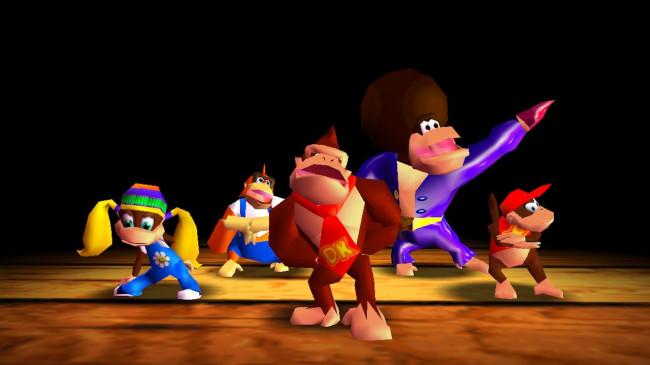
But taken together with the character failures of the playable Kongs, one can’t help but be underwhelmed by DK64 on a narrative level. With a new console and expanded capabilities, Rare and Nintendo had a chance to really push the Kong series into exciting new directions; instead, DK64’s story and cast feel more rehashed than anything. For a platformer released in the wake of several other unique and successful platformers, that doesn’t bode well.
Music, Visuals, and Gameplay: Anything That Can Go Kong, Will Go Kong
And here we find the root of the issue.
At the end of the day, my own biggest gripe with DK64 is that for long stretches of its even-longer playtime, it’s just not that fun to play. Take the setting: although the hubworld structure for a platformer is no sin in and of itself, Kong Isle proves to be an especially boring iteration of this concept, with its bland, looping beaches and general emptiness. Especially at the game’s outset, there just doesn’t seem to be all that much going on in the overworld, an atmosphere that’s worsened by disappointing graphics and rendering.
Now, I’ve never been somebody who’s placed all that much emphasis on exceptional graphics, but both then and now, DK64 fails to meet expectations: in 1999, it was assumed the game would represent the pinnacle of what the N64 could achieve. Instead, its look was comparable to Banjo-Kazooie or even Super Mario 64, released nearly four years earlier. Granted, later sections of the game utilize dynamic lighting and more interesting textures, but it’s hard to come away from this game without your eyes hurting at least a little bit.

But by far, DK64’s most grievous sin is its gameplay. Contained within its mammoth 30 hours is a whole host of repetitive collection tasks, wherein all manner of bananas, coins, crowns, and fairies must be obtained, as well as numerous puzzles differentiated only by progressively tighter time restrictions. Many of these puzzles necessitate constant character-switching, which players are unable to do except at specific points on the map, forcing them to tediously retrace their steps. Combat mechanics, while varied between the playable Kongs, quickly grow tiresome and lack the dynamism or tension needed for lasting entertainment value. The boss fights switch up that monotony, but they too suffer in that a few occur twice with only slightly different tactics.
All of these issues come together to create a gameplay style that erodes engagement, leaving players feeling bored, frustrated, or just plain apathetic. For many fans of the breakneck, adrenaline-pumping pace of the Donkey Kong Country titles, DK64 represented a negation of all that excitement, leaving the game a boilerplate, bloated platformer that could make you question why that genre of game is even fun in the first place.
Harsh? Maybe. But if there’s a saving grace here, it’s in the music, as so frequently is the case with Rare games.
Grant Kirkhope fills DK64 with fun and quirky tunes that save the game from becoming a total mind-numbing slog, and even the sound effects are inventive and interesting. But the crown jewel is the “DK Rap”: the strange, ill-advised, and improbably catchy opening theme song written and performed by George Andreas. Although the song was meant to be at least a little tongue-in-cheek, this hip-hop horror was irrevocably seared into my brain, as I’m sure it was for the majority of those who heard it.
No one should ever have to carry that baggage with them through childhood.
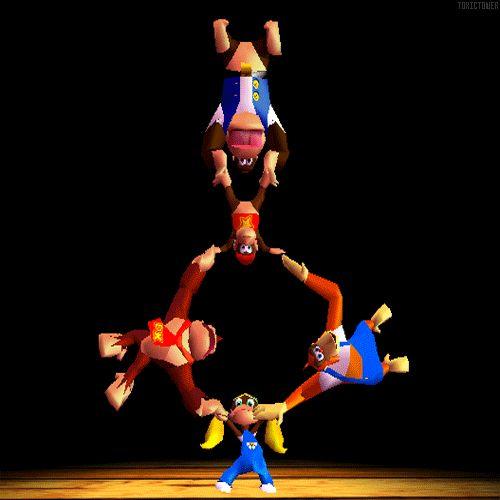
Impact on Gaming and Culture: The Kong Side of History
Despite what I’ve posited above, DK64 made good on many of its weighty expectations. Fiscally, it cleaned up in the 1999 holiday season, providing a bulwark for Nintendo against the newly-released Sega Dreamcast, and continued to dominate the charts into the following year. By 2004, the game had sold over 2.3 million units, enough to make it a best-seller for the system and a Player’s Choice game selection for Nintendo. Critics across the board gave DK64 high scores (netting “universal acclaim” according to Metacritic) and it won Best Platformer at the 1999 E3 Game Critics Award.
Taking all that into consideration, DK64 being a part of the video game canon seems like a no-brainer, right?
Counterpoint: DK64 corrupted the franchise.
No, seriously: consider what happened to the Donkey Kong series directly following this game. After several years of radio silence, 2003’s Donkey Konga was a riff on the Dance Dance Revolution formula that used a kitschy conga-drum controller — hardly what one would expect from one of Nintendo’s most established characters and universes. The following year saw the release of the critically-acclaimed Mario vs. Donkey Kong for the Game Boy Advance, which, although a fun game in its own right, still felt a bit like an attempt to revive interest in the franchise with the help of the ever-popular plumber.
Indeed, the next several titles in the franchise were either sequels to Konga and M vs. DK, or else portable-gaming titles that did little to reinvent or reinvigorate the series. It wasn’t until 2010’s Donkey Kong Country Returns that DK finally came back to a flagship Nintendo console, in an extremely entertaining and well-made game that clearly sought to hearken back to the early-90s heyday of the franchise, from the title and aesthetic to gameplay on down. The sequel, Tropical Freeze, was even better, featuring some of the most ingenious level design, vibrant animations, and frustratingly difficult gameplay that this writer has ever experienced in a side-scrolling platformer.
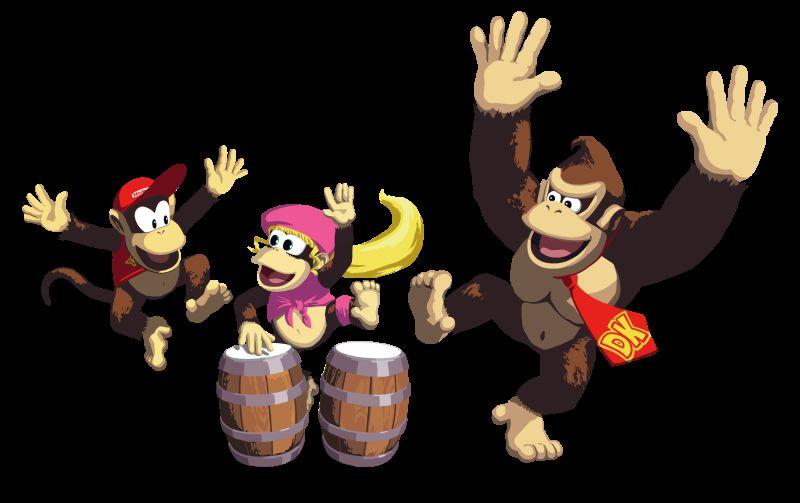
This chronology makes one thing abundantly clear: DK64 completely altered Donkey Kong’s trajectory. In comparison to the core Mario games, which managed to follow the overabundant success of SM64 with two more slam-drunks in the form of Super Mario Sunshine and Super Mario Galaxy, poor old DK was shuttled off to novelty titles and Game Boys of all kinds, before finally finding his footing more than a decade later.
In assessing the impact of DK64, one cannot ignore this cataclysmic effect that the game had on its own franchise, as well as on the 3D platformer in general. DK64 marks the end of not just the 90s, but also the golden era of the genre, perhaps being the first overstep, the first one that gave gamers platformer-fatigue. It’s a testament to the time-honored truism that bigger does not mean better.
But there’s one other crucial bit of context to the legacy of DK64—one that helps explain why the series fell by the wayside, and one that puts a rotten cherry atop our befouled cake.
BONUS LEVEL: Rare and Nintendo Fall Out of Love (Or: The Kong, Slow Goodbye)
DK64 ended up being the last time a Rare game made for a Nintendo system achieved that high level of success and acclaim: although subsequent titles like Perfect Dark and Banjo-Tooie had their fair share of appreciation, the developer’s relationship to Nintendo only grew tenser, as is usually the case with an overachieving developer and their parent publisher. The mistakes of DK64 contributed to a growing lack of interest in the 3D platformer within the industry, and Conker’s Bad Fur Day, the last game of that genre they would release on the N64, was about as antithetical to the family-friendly Nintendo game as it gets, toting a sour and cynical narrative that mocked the very aesthetic that Rare had made their name upon.
The pair’s final collaboration, 2002’s Star Fox Adventures, was a fitting end to a strained relationship: originally meant to be a standalone Rare title for the N64, none other than Shigeru Miyamoto convinced them to rework it into a new Star Fox game for Nintendo’s new console, the GameCube. The day after its release, Rare was bought by Microsoft as part of the latter’s plan to enter the console gaming industry, bringing a close to one of the most fruitful creative relationships in modern gaming.
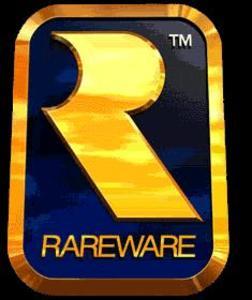
It’s not a controversial opinion that Rare’s latter-day output with Microsoft never quite reached the same highs as its earlier releases. At various points throughout the 2000s, team members moved on to other companies or started their own—Playtonic Games is perhaps the most notable, releasing the spiritual successor to the Banjo games, Yooka-Laylee, in 2017. Obviously, Nintendo has proved itself successful, adaptable, and ever-innovative up to the present day, but nonetheless, the loss of Rare is still widely considered a low point for the company. The dissolution of their mutualistic efforts can be sourced, however subtly, in the missteps of DK64 and in that game’s complicated legacy.
VERDICT: The Kong Place at the Kong Time
In its review of the game, the website GameFan made what is perhaps the best comparison of all time by proclaiming Donkey Kong 64 the Eyes Wide Shut of gaming: “a big bloated project with not enough brilliant moments to justify the numbness … [of] sitting through the whole thing.” Although this utterly amazing take betrays substantial cinematic illiteracy, its description of DK64 couldn’t be more correct.
Despite its financial success, DK64 is among the worst titles that the franchise has ever produced, featuring a bloated, uninspired main storyline that recycled old ideas while failing to bring interesting new ones to the table. Its gameplay vexed fans with its unrelenting monotony and frustrating backtracking, while its graphics, far from “push[ing] the hardware to levels not thought possible,” were hardly an upgrade from earlier platformers of the era. Its legacy is one of disappointment and heartbreak, as both the Rare/Nintendo relationship and the Donkey Kong franchise were sent into tailspins following DK64.
It is just not that good of a game.
For the reasons posited above, I hereby deny Donkey Kong 64 entry into the Video Game Canon…with the exception of the “DK Rap,” which, for its unparalleled contributions to the field of historically bad novelty songs, shall be allowed entry and immortalization via infamy.
So, on that note: c’mon Cranky, take it to the friiiiiiiiidge…
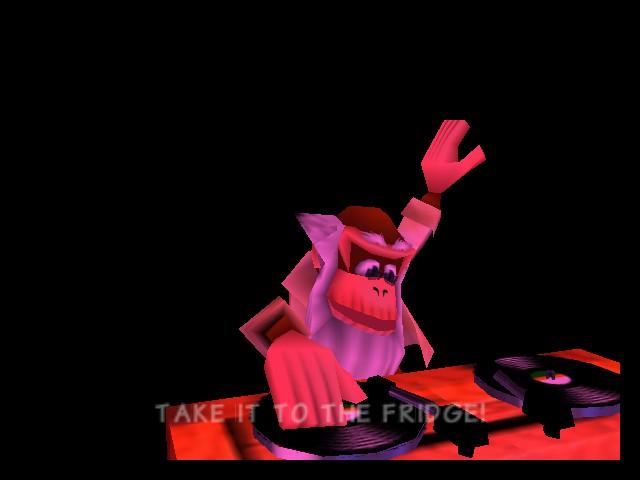
Chris Anhorn will be featured as a panelist in “Argue With Us: Which Games Belong in the Video Game Canon?”, one of two panels With a Terrible Fate is offering at PAX West 2018. Don’t miss this chance to learn more about the series and join us in a live discussion about whether an audience-selected game belongs in the canon!



